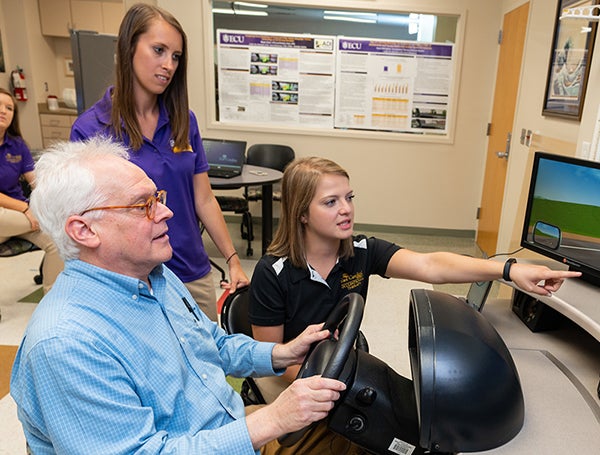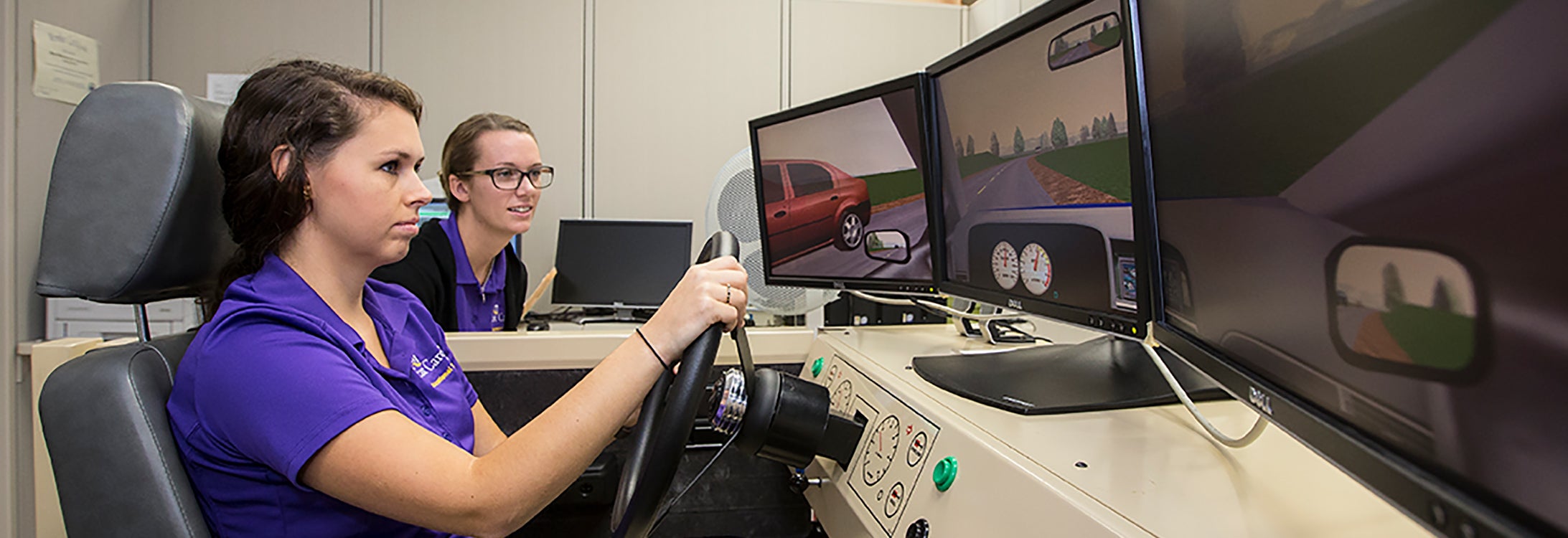Research for Older Adult Driver Initiative (ROADI)
The overall aim of ROADI is make motor vehicle driving in North Carolina safe for all drivers and pedestrians. When ROADI was initiated in 2003, the focus was on older drivers retaining their freedom and independence while keeping them safe on the road. Since then, ROADI has expanded to encompass driver screening, evaluation, and rehabilitation throughout the lifespan, although older drivers remains at the core of the initiative.
The emphasis of the ROADI’s research is a translational. Using the latest research from others in the field, we will apply the designs and implications to occupational therapy practice in the driving evaluation and rehabilitation.
Overall, our initiative is involved with:
- Assessment – What are the current assessments being used and how effective are they? How can they be used to predict whether a driver is safe or at risk?
- Intervention – How can we use the driving simulator to intervene with the at-risk driver? Can we develop normed-based scenarios for therapists to use?
- Education – How can we engage physicians, occupational therapists, and other health care professionals to address driving as a critical issue? How can ensure health care professionals appropriately refer to general practice occupational therapists and specialists in driving rehabilitations?
- Collaboration – How can we collaborate with law enforcement, insurance providers, and other stakeholders to ensure safety on the roads?
- Advocacy – How can we advocate for our clients to ensure that they get the best assessment/intervention at the appropriate times? How can we inform and assist caregivers when the keys need to be taken away?
Why was ROADI created?
With the aging population expected to climb 20% over the next 25 years, the rate of crashes and fatal accidents involving older adults is likely to become one of the leading causes of death among 65-75-year-olds. Currently, crashes are the second leading cause of death among 75-85-year-olds, second only to falls.
Across the country, there is a limited number of occupational therapists who are driving rehabilitation specialists (DRS). In North Carolina, there are only 11 DRS for state that has 12% of its population over the age of 65 years of age and growing! Frequently, someone needing an evaluation may need to wait 8-12 weeks for an appointment. There is a clear need for more specialists as well as general practitioners to address this area of practice.
Currently, there is no major driving evaluation, rehabilitation, and research center in North Carolina or surrounding states. ROADI was initiated to serve in this area be on the leading edge of translational research in the area. Only a few occupational therapy departments in the country have ongoing research programs for older adult drivers.
Why occupational therapy and driving?
Occupational therapists are health care professionals who help individuals with skills for the job of living. Occupational therapists assist when individuals have difficulty with their daily tasks, including community mobility and transportation. Driving is a component of transportation that is critical to individuals across the lifespan. It becomes an issue when medical illnesses and diseases, as well as aging impacts an individual’s ability to continue to drive safely.

What do therapists assess in driving?
Evaluate older adults to determine any physical, visual, or cognitive limitations that could affect how they are able to drive a car.
Conduct an on-the-road driving test to determine how problems identified in the evaluation affect a person's ability to drive safely.
Provide training to drivers that improves their ability to drive safely.
Recommend adaptive equipment and train older drivers how to use the equipment to help them continue to drive and get around safely and appropriately.
For more info visit The American Occupational Therapy Association (AOTA)
What is happening at ROADI?
There are several avenues of research that are being pursued under ROADI. Most of the studies have involved master’s degree occupational therapy students. In addition, there have been service projects related to driving undertaken by Anne Dickerson and members of ROADI research team.
- Driving Evaluations. A survey of Driver Rehabilitation Specialists was completed and is currently being analyzed. The data will assist us in determining how to define what is elements the general occupational therapy practitioners can perform and when the individual requires the specialized testing from a certified driving rehabilitation specialized. Dr. Dickerson has proposed an algorithm that has been presented nationally and will be published in an upcoming issue of American Journal of Occupational Therapy.
- Driving Simulation Research. ROADI has a dedicated laboratory with a driving simulator. There are several studies underway using the simulator including: developing and ranking scenarios as norms for use by therapists who may use driving simulators in their practice, a driving self awareness study for older adults that might be at risk for unsafe driving, and a study to compare the reaction times in a simulator to reaction times of a simple time tester.
- On-Line Education. State Farm Good Neighbor Insurance Program generously supported Anne Dickerson to develop on-line courses for 1) general practice occupational therapists who want to know more about driving to use in their practice area and 2) for those practitioners interested in pursuing driver specialization. The first course is about the activity of driving and the second course will focus on driving evaluations.
- At-Risk Screening Tool. One of the first objectives of ROADI was the development of a screening tool for “at-risk” activities, such as driving. A completed master’s thesis has been the beginning of the long-term project with the goal of interviewing older adults and caregivers about IADL tasks that are impacted by the aging process.
- CarFit. Anne Dickerson, as one of the few national instructors of CarFit, works with AOTA to increase the numbers of occupational therapy practitioners that volunteer in the national program of CarFit.
- Brake Reaction Timer. Over the last couple years, occupational therapy students have assisted Anne Dickerson in the collection of data to gain norms for the new RT-2S Simple Brake Reaction Time Tester. This tester has been demonstrated as more reliable and valid than the AAA Blue Box that has been used for years by driving evaluators.
Related ROADI PDFs
